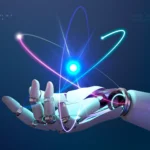In today’s rapidly evolving digital age, new terminologies and concepts emerge at a staggering pace. One emerging idea gaining attention across various fields is beginning to spark conversations among innovators, futurists, and cultural theorists. Its meaning is deeply rooted in the convergence of human values and technological evolution, offering a lens through which we may interpret the complexities of our modern existence. The rise of insanont reflects a growing global desire to bridge the emotional intelligence of humans with the speed and scalability of technology. As the world becomes more reliant on artificial systems, there is a renewed focus on preserving humanity within that integration, emphasizing the importance of empathy, awareness, and adaptability in a technology-driven society.
The Origin and Etymology of Insanont
Although the exact origins of insanont remain debated among experts, the linguistic construction suggests a fusion between the Latin root “insan,” which refers to human or humane, and a suffix reminiscent of “ont,” derived from ontology the philosophical study of being. This blend conveys the idea of a human state of being in the context of modern challenges, especially those involving artificial systems, ethics, and identity.
What makes insanont particularly intriguing is how it does not strictly belong to one discipline. Instead, it draws from sociology, psychology, information technology, and even spiritual philosophy. By transcending conventional boundaries, insanont provides a holistic framework for understanding how human consciousness can adapt and thrive amid ever-changing environments. It proposes a redefinition of intelligence one that includes emotional resilience, ethical sensitivity, and creative thinking.
Insanont and the Human-Technology Relationship
At the core of the insanont philosophy lies the intricate dance between humans and machines. As automation, machine learning, and robotics become integral parts of daily life, society faces a pressing question: How do we retain our humanity in an increasingly automated world?
Insanont offers a compelling response by advocating for technological development that aligns with human values. This includes the ethical design of artificial intelligence, user-centric programming, and systems that prioritize psychological well-being. In a world where productivity often outweighs purpose, insanont calls for a recalibration one that honors the complexity of the human spirit. It encourages technologists to look beyond metrics and into meaning. When apps and devices are designed with insanont in mind, they aim to serve not just functional needs but emotional and societal ones. Whether through more empathetic AI or systems that foster community over competition, insanont becomes a compass guiding ethical progress.
Cultural Reflections of Insanont in Art and Media
The influence of insanont is also beginning to show in contemporary art, literature, and digital storytelling. Artists are exploring the tension between organic and artificial through mediums that evoke emotion, contemplation, and dialogue. Whether it’s through virtual reality installations or speculative fiction narratives, insanont serves as an underlying theme that connects technology with deeply human experiences.
Film and television have also embraced aspects of this concept, particularly in dystopian and post-human narratives. Characters often grapple with their identities in technologically saturated environments, questioning what it means to be truly human. These portrayals, while fictional, mirror real-world dilemmas that insanont aims to address. Through such cultural expressions, the philosophy gains a broader audience, inviting people from all walks of life to reflect on the nature of their existence in the digital era.
Psychological Dimensions
Another vital aspect of insanont lies in its psychological implications. In an age dominated by fast information, constant connectivity, and digital personas, many individuals face a growing sense of alienation and identity fragmentation. Insanont responds to these challenges by proposing a mindset rooted in self-awareness and integrative thinking. This involves recognizing the multi-layered dimensions of being mental, emotional, spiritual, and social and harmonizing them within a digitally mediated context. People who embrace insanont tend to develop stronger emotional regulation, critical thinking, and empathy. These qualities are essential for personal well-being and community resilience, especially when society is confronted with global crises like pandemics, climate change, and misinformation.
Therapists and life coaches are beginning to incorporate insanont principles into their practices. By encouraging clients to explore their digital habits, communication patterns, and value systems, professionals help them foster a sense of coherence and purpose. In doing so, insanont becomes not just a concept but a practical tool for psychological empowerment.
Education and Insanont-Based Learning Models
The traditional education system, often criticized for its rigidity and one-size-fits-all approach, stands to benefit significantly from the insanont framework. Educators who integrate these principles aim to create learning environments that are not only intellectually stimulating but emotionally nourishing.
Curricula designed around insanont emphasize emotional intelligence, collaborative problem-solving, and interdisciplinary learning. Students are encouraged to explore both technology and humanities, recognizing the interdependence between technical skills and ethical reasoning. This holistic approach equips them to navigate the complexities of the modern world with confidence and compassion. Moreover, digital platforms for learning are evolving in line with insanont values. Adaptive learning software, for example, is being reimagined to respect individual learning rhythms rather than push uniform standards. This allows for a more humane and sustainable educational experience one that values process over performance.
Corporate and Organizational Culture
In the business realm, insanont is redefining leadership, innovation, and workplace dynamics. Companies that adopt insanont principles prioritize human-centric design, inclusive culture, and ethical accountability. This shift is not just moral it’s strategic. Studies consistently show that organizations with empathetic leadership and diverse teams outperform their competitors.
Insanont-informed leadership focuses on purpose, transparency, and employee well-being. Rather than treat workers as cogs in a machine, these leaders recognize their staff as complex individuals with aspirations, struggles, and unique contributions. They foster environments where feedback is welcomed, growth is supported, and innovation is encouraged.
Insanont and the Future of Digital Ethics
As technology continues to evolve, the need for robust ethical frameworks becomes increasingly urgent. From data privacy concerns to algorithmic bias, society is grappling with the darker side of digital innovation. Insanont offers a critical perspective in these discussions by emphasizing long-term human welfare over short-term gain.
Open-source movements and decentralized technologies are also drawing from the insanont philosophy. These initiatives aim to democratize access, promote transparency, and protect individual autonomy. By aligning technical development with ethical responsibility, insanont paves the way for a digital ecosystem that serves rather than exploits its users.
Conclusion
In a world that often prioritizes speed over sensitivity and output over introspection, insanont offers a refreshing alternative. It invites individuals, institutions, and societies to rethink the foundations of progress through a human-centric lens. Whether applied in education, technology, art, or governance, the principles of insanont help foster a more balanced, compassionate, and sustainable future. Though still a developing concept, insanont holds immense potential to reshape how we engage with ourselves, each other, and the systems we create. By embracing this philosophy, we open doors to innovations that honor the complexity and beauty of the human experience.
As we move forward into uncharted territory, insanont may well become one of the most vital guiding forces of our time a bridge between the wisdom of the past and the promise of the future. The journey has just begun, but its direction is clear: toward a world where humanity and technology grow not apart, but together.









